Sometimes, a person does great things abroad and makes history — all while remaining virtually unknown in her or his home country. I guess this happens to some vloggers or gamers now, but my best example would be Henk Sneevliet (马林), who in 1921 guided the formation of the Communist Party of China. Except for a street in Amsterdam, almost nobody in the Netherlands knows about Sneevliet. And it’s a similar story for Johannis de Rijke, who has a statue in the city of Nagoya, Japan, and his son Hendrik, who has a statue in Nantong, China.
I stumbled onto this story while walking in downtown Nantong when I suddenly saw the statue of a foreigner, and to my surprise, it was of a Dutch guy. But the first thread of this story actually starts a long time ago.

Keeping the water out of Japan
For centuries, the Netherlands has had a great reputation for water management. From the 11th century, land was reclaimed by installing dikes on coastal areas, and from the 15th century onwards, windmills were used to pump out water from lakes, making new land for cities or farming. And as the Netherlands grew in land surface, so did its water management knowledge — as well as its reputation of it.
So it is on this canvas that this line of history is painted, where it crosses with that of Japan.
In 1639, Japan’s shogunate government decided to ban all foreigners & cut ties with other countries, starting a period called Sakoku (meaning ‘closed country’). The outside wasn’t just allowed to come into the country; ships were burned to prevent the Japanese to leave as well. The only exceptions to this policy were two places; the Tsushima island for contact with the Koreans, and a factory in Nagasaki, which was first Portuguese owned but later became open to the Dutch. For a long time, knowledge and innovation flowed into Japanese hands and minds, who even had a word for it: Rangaku (meaning ‘Dutch learning’). Relying on their only connection to the Western world, the Japanese even studied the Dutch language to better understand the scientific books and writings supplied by the Dutch.
In 1853, after 214 years, Sokuku ended, after American ships forced their will on Japan, much of the same faith that was simultaneously happening to China and other Asian countries. This was followed in 1868 by the Meiji Restoration, by Emperor Meiji. Japan was ready to accept Western ideas and production methods, rapidly industrializing in the common decades.
A Dutch political advisor, Guido Verbeck, suggested the Iwakura Mission and the government promptly send 80 Japanese diplomats to the United States & Europe to learn from the West. Soon, experts from many countries such as the US, Germany, France, and the United Kingdom arrived in Japan to help modernize the country. These foreigners were called ‘O-yatoi gaikokujin’, literally meaning ‘hired foreigner’. But even though the Dutch exclusive connection to Japan evaporated, Japan knew well to get its ‘o-yatoi gaikokujin’ for its water management from the Netherlands.
Japan has three thousand rivers and lots of rainfall — even more precipitation than the Netherlands — and back then primitive or no water management, leading to frequent flooding, troubling farmers. And thus from 1872 to 1903, eleven Dutch engineers were invited and worked in Japan to sort rivers from rice fields, and defend harbors from the tide.
It’s hard to imagine what kind of adventure this must have been — Japan being vastly underdeveloped. The Dutch engineers faced bureaucracy and language problems and had to obey their Japanese supervisors, lest they not be sent home. Yet they earned a minister-like salary, and villagers around the areas where they worked looked at these bearded white European men like Gods, bowing and helping with whatever they could, such as carrying luggage.

Among the engineers was Johannis de Rijke. Johannis grew up in the Dutch village of Colijnsplaat, a town that itself was a lake before the year 1598. He arrived in Japan in 1873 and stayed for 30 years, drawing two new dams for the Port of Osaka, a water pipeline in Osaka, and a quay in Kobe. He improved the ports of Tokyo and Yokohama. Together with G.A. Escher (father of the famous artist M.C. Escher) he improved several Japanese rivers. Later, De Rijke worked at a high position in the Japanese Ministry.
But his most significant achievement in Japan is the protection of the city Nagoya. The delta of three rivers, Kiso, Nagara, and the Iba, regularly flooded the area and caused major problems. Following De Rijke’s plan and canalizing the lower part of the Kiso river, the city was protected from regular flooding, which allowed it to develop into a modern port.
De Rijke didn’t just apply Dutch theory to drawing blueprints. Also new wood techniques were applied, such as railings in the water from willows and brushwood. Panels were made and filled with stones, and sank on the banks of rivers. Because willow barely rots, they keep the sand of the river in place; at that time a new technology for Japan as well as for the rest of the world.
The Huangpu river
Where then, does this story flow to China?
Well, De Rijke didn’t like the Japanese formality, the rituals and customs, and sometimes resistance. In 1875, Escher & De Rijke (约翰斯·特莱克) visited Shanghai and wrote a report about the Huangpu river (黄浦江), and De Rijke came back in 1897 to make new proposals and warning for how the sand that was seeping into the river: if nothing was done, Shanghai would be useless as an international port. Already then, big ships had to wait for the high tide to come in. But problems grow to the size they need before they’re acknowledged, and only in 1905 did the Chinese government see the necessity to approve it.
Together with his sixteen-year-old son Hendrik, Johannis arrived in Shanghai in 1906. By then the harbor of Shanghai had been bogged down; too much sand had come in and a sandbank by the down of port town of Wusong (吴淞), (now a subdistrict of Baoshan). The sandbank made the river too shallow for large vessels to enter.
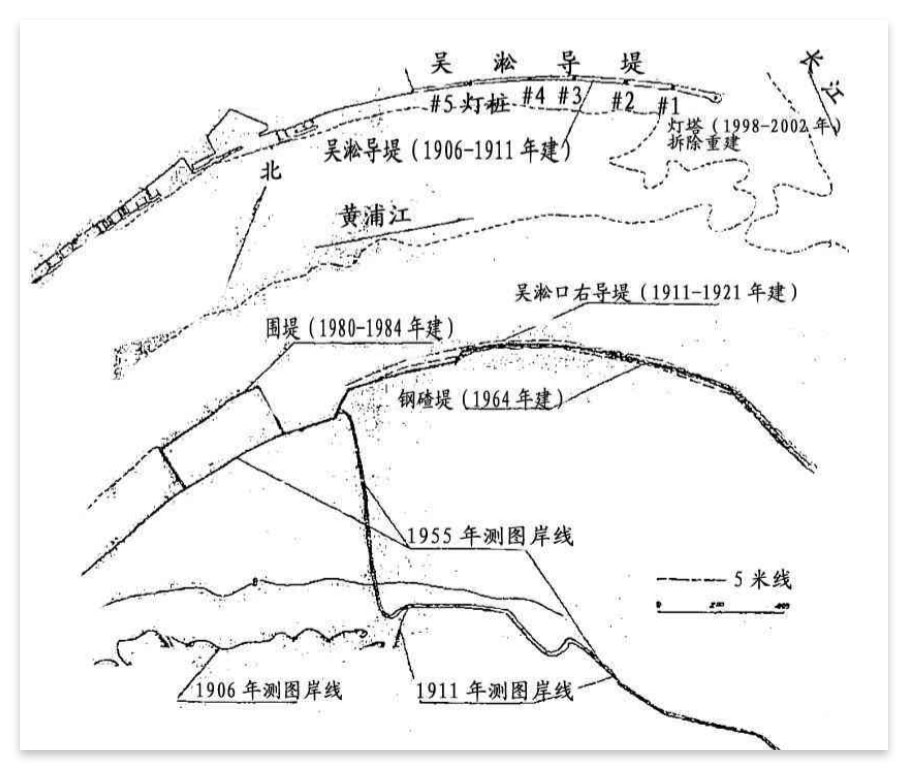
Escher & De Rijke designed a northern guiding dike and changed the flow of the river — and because of the big waves coming into the port, they reinforced the quays.
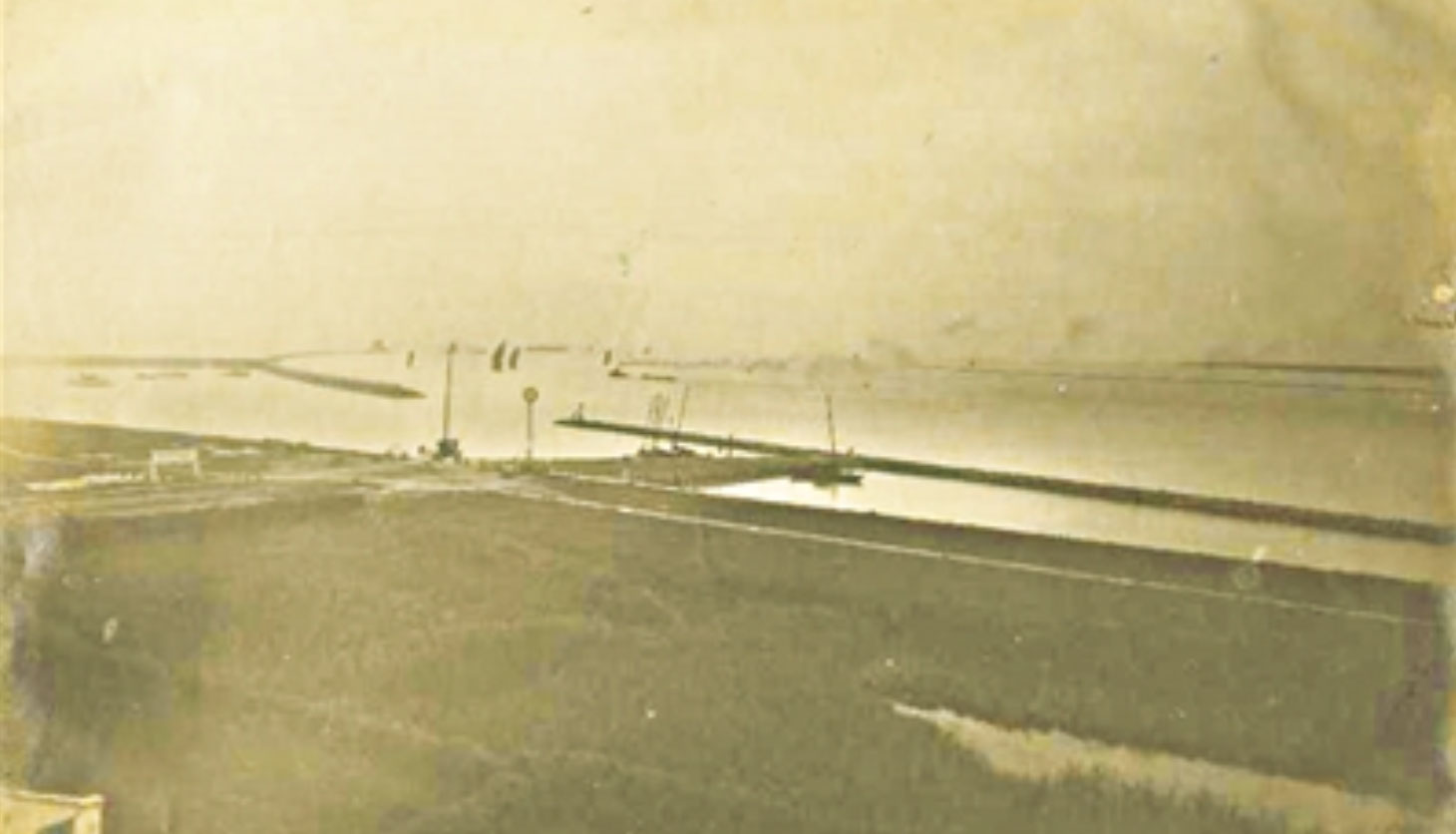
At the same time, De Rijke took on another project, a bit further out of the city — asked by a Chinese landowner. De Rijke worked on reinforcing the riverbanks to regulate the flow along the north bank of the Yangtze (长江), to prevent erosion.
Meanwhile, the Wusong sandbank soon vanished — and in May 1909, the British warship Astraea was able to sail into the harbor at full speed. Although the project wasn’t fully completed yet, Johannis — 68 years old — left in 1910 to return to the Netherlands, where he died 3 years later.
To Nantong

However, his son Hendrik (亨利克·特莱克) stayed in China. Born in 1890 in Japan, Hendrik went back to the Netherlands to study water engineering in Groningen — the largest city in the north. Hendrik himself becomes a renowned engineer.

And the reputation of De Rijke — Johannis, or Hendrik, or both — reached Nantong (南通), a riverside city around 100 kilometers from Shanghai. The city was troubled by periodic flooding of the Huai river (淮河) in the north, and the Yangtze in the south (长江), both of which were hurting its development. The floods cause damage and outbreaks of cholera.
Already from 1911 to 1914 a group of Americans with experience from working at the Panama Canal had tried to tame the Huai river, but the project failed for several reasons. Some Chinese officials opposed the project, and the Americans didn’t want to cede authority to an important official named Zhang Jian (张謇) — and when World War 1 broke out, the project was completely stopped.
The Netherlands, however, never participated in the First World War, remaining neutral. Johannes and Hendrik made a trip before Johannes left to go back to the Netherlands permanently (although it is not clear when), but around 1916, Hendrik was formally invited by Zhang, who was in charge of the city’s water projects and headed the group overseeing this, called the Dike Protection Association (Baotan Hui, 保坍会). And so Hendrik arrived in the spring of 1916 and started right away with his work, mapping the area around Nantong and going to the riverbanks to investigate. He mentioned he considered the banks of the Yangtze as his home now, “dwelling on the riverside, day and night”.


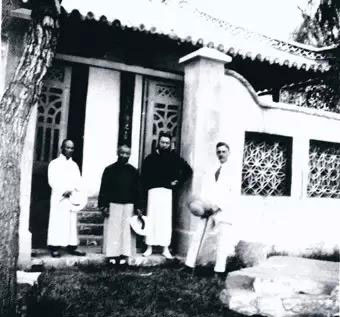
After three months of field observations, he submitted the ‘Nantong Protection Plan Report’ (南通保坍计划报告书’) to Zhang Jian. His plan used his arsenal of solutions to stop the floods, including 10 water basins, 1 large sluice, 7 medium & small sluices, a bridge, coastal reclamation, 6 reservoirs, and 3 new roads, and planted reeds and trees to solidify the river banks. His work didn’t just cover Nantong, but also nearby cities such as Rugao (如皋), Haimen (海门), Qidong (启东), and other counties, taming the Huai, Yangtze, and the Tanjiang rivers (坍江).
Hendrik’s collaboration with Zhang was much better than Zhang’s with the Americans. Zhang would later write: “With me, he, in all his dealings, seemed more like a son than an employee.”



Zhang quickly approved the plans — and Hendrik stayed to oversee the construction of these projects, working from morning to evening. Yet on August 17, 1919 — when the weather reached scorching heat — the bottom plate of the Nine Gates Sluice (九门闸) was completed. At the construction site, far out of the city, Hendrik was infected with cholera, and the next morning he died, 29 years old, from the infectious disease he ironically was meant to stop.
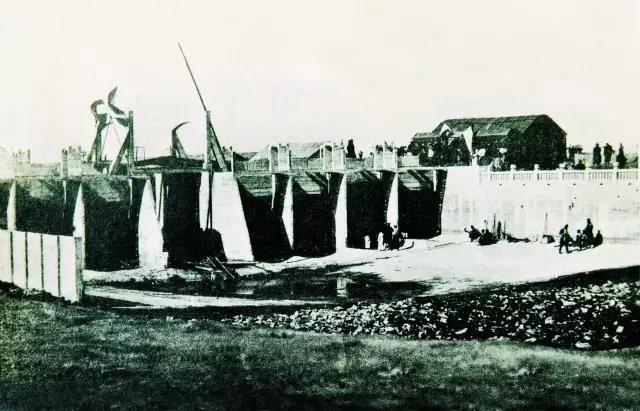
Lasting legacy
Johannis de Rijke lies buried in Amsterdam — where his grave is still visited by a Japanese delegation yearly. A statue of Johannis stands in Nagoya, and one in Kaizu, where there’s also an annual rowing competition in his name. His hometown Colijnsplaat still attracts a yearly amount of Japanese tourists, and in 1998 the Japanese government gifted a bust of De Rijke to the city, close to the house De Rijke was born. The Dutch city — then finally acknowledging its citizen — then placed a replica of the statue from Nagoya near its port, perhaps to attract more Japanese tourists.

Hendrik’s water management plans were completed in the coming years without Hendrik, while Hendrik himself never left China. After his death, with consent from his mother, Hendrik was buried in a public funeral on the southern foot of Sword Mountain (剑山) — with Zhang, despite being 63 years old, being one of the pallbearers. His tomb was ravaged in 1966 and most of the outside was lost. In 1987 his tomb was moved to the front of the Bodhi Cave (菩提洞), and the original tomb was also found and restored. When I asked the guards about the grave, they described Hendrik as a hero of Nantong.
Hendrik also has a statue in downtown at Nantong at Hao river (濠河) — one at a flower park (荷兰花海) that lies far out of the city, and one at the Yangtze riverside in a park called ‘城市绿谷’ (Urban Green Valley). This statue shows several members of the Baotan Hui, including Hendrik & Zhang, as well as Johannis.

Nantong’s city archive still has nearly all of Hendrik’s plans, and now also has a Dutch street (荷兰街), with fiberglass cows & LED-lit windmills, and houses shaped like the warehouses in Amsterdam. Many of the dams & sluices Hendrik designed are still in use today — while some that are no longer in use are protected heritage architecture. The trees planted along the Yangtze all the way from Tianshenggang (天生港) to Langshan (狼山段), now stand tall and are over 100 years old.
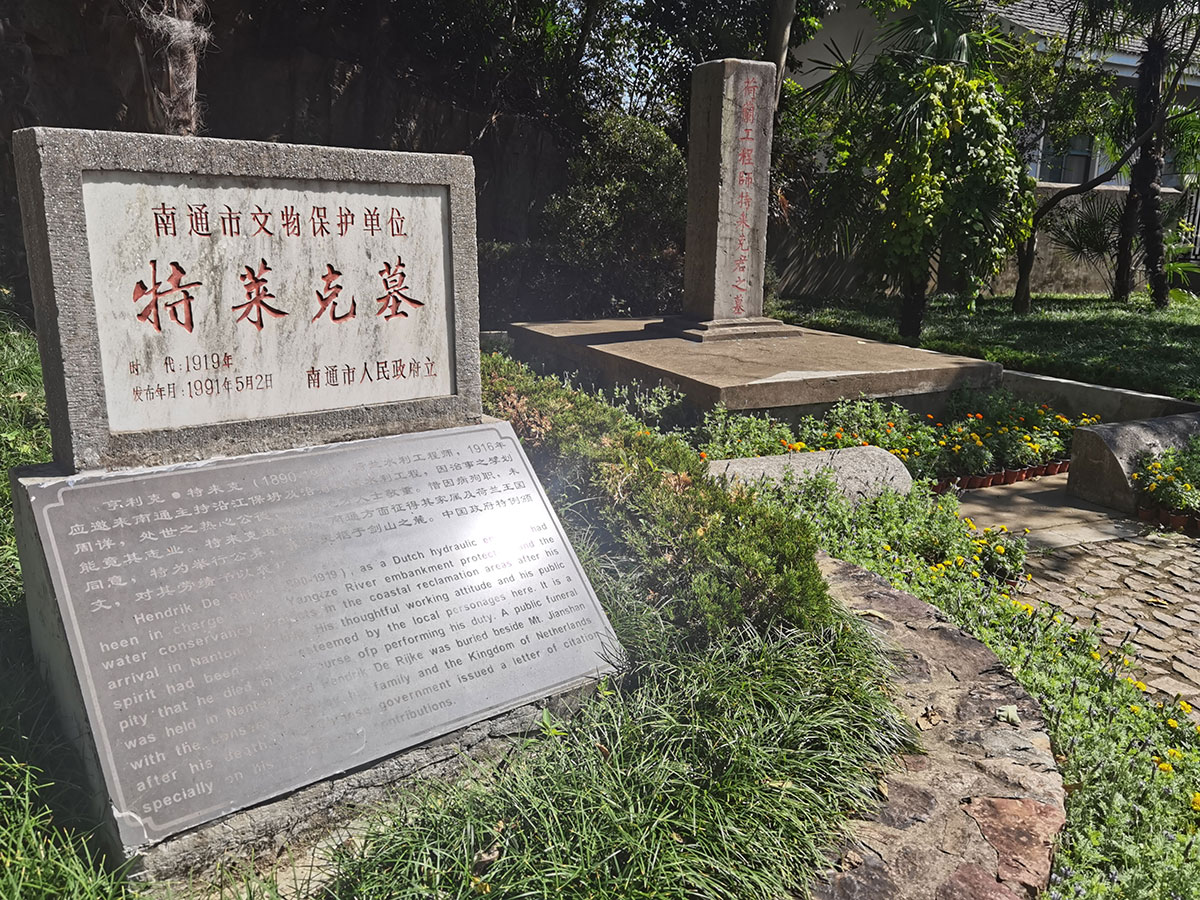
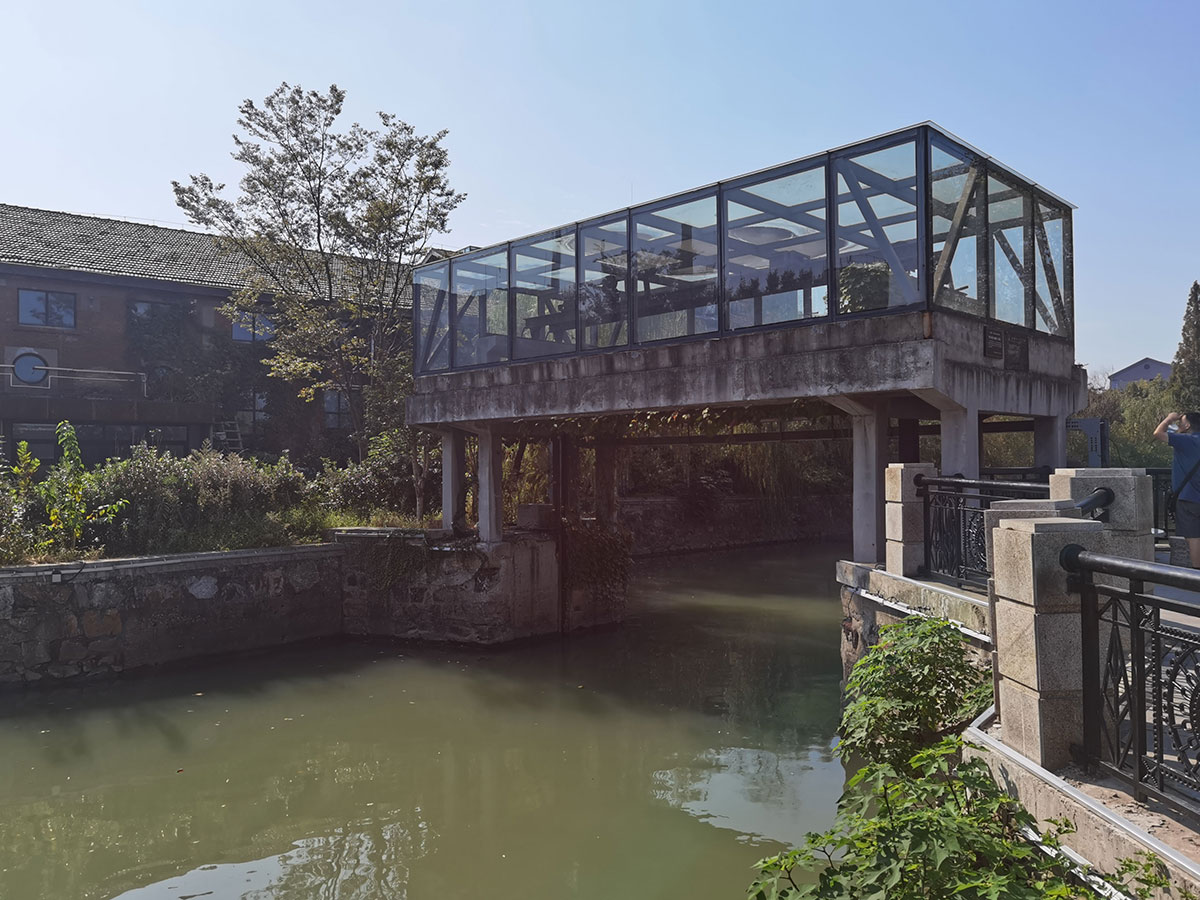
Sources:
- https://www.zeeuwseankers.nl/verhaal/johannis-de-rijke-en-de-whangpoo-rivier-in-china
- http://www.nantong.gov.cn/ntswgxj/jytabljg/content/9a12732b-9a83-47cf-a156-f849769530f6.html
- http://wm.jschina.com.cn/9658/201710/t20171010_4727659.shtml
- https://nl.wikipedia.org/wiki/Droogmakerij
- https://nl.wikipedia.org/wiki/Watermannen
- https://en.wikipedia.org/wiki/Sakoku
- https://dutchreview.com/culture/history/dutch-engineering-expertise-and-water-management-a-big-business-in-the-netherlands/
- https://www.vpro.nl/programmas/ovt/speel~POMS_VPRO_210281~fragment-ovt-21-mei-2000-uur-1-22-min-nederlandse-watermannen-in-japan~.html
- https://en.wikipedia.org/wiki/Meiji_Restoration
- https://en.wikipedia.org/wiki/Iwakura_Mission
- https://en.wikipedia.org/wiki/Guido_Verbeck
- https://nl.wikipedia.org/wiki/O-yatoi_gaikokujin
- https://www.docin.com/p-396056039.html
- https://api.parliament.uk/historic-hansard/commons/1874/jul/02/china-state-of-woosung-bar-shanghai
- https://en.wikipedia.org/wiki/HMS_Astraea_(1893)
- https://pswapps28.wordpress.com/mongolia/zij-gingen-oostwaarts/johannis-de-rijke/
- http://www.zgsyb.com/news.html?aid=552572
- http://wm.jschina.com.cn/9658/201710/t20171010_4727659.shtml
- https://nl.wikipedia.org/wiki/Johannis_de_Rijke
- https://www.sohu.com/a/198388690_700096
- http://sfj.nantong.gov.cn/ntsrmzf/ggwh/content/1443dbb3-2d31-4732-9c2a-ef085b1ebe2c.html
- http://daj.nantong.gov.cn/ntsdaj/jynt/content/23ab1d89-7c88-4af7-87cc-f14fd7ad21e4.html
- https://www.meipian.cn/22lozyz1